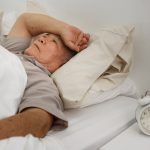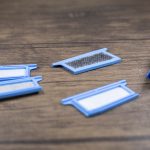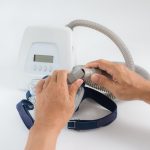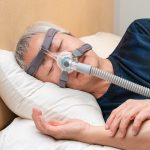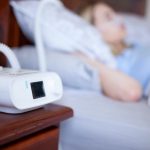Improve Your Sleep By Tracking It
Posted by Dr. Shelby Harris
I’m a huge fan of gathering data and being an active observer (and participant!) in your own diagnoses and treatment. If you are beginning to notice that your sleep isn’t as you would ideally like it to be, the first step is to track your sleep for a short while to get more information about what may actually be going on. Sleep diaries are extremely useful when you may notice that your sleep quality is just not as good as it once was, or if you find that you have episodes of wakefulness at night when you’d rather be asleep.
Whenever I see someone new in my practice, I always ask that the patient fill out a sleep diary for the two weeks prior to our consultation appointment (I have my own copy on my website https://www.drshelbyharris.com/forms in case you’re interested in downloading those!). I also have my patients continue using the sleep diary throughout treatment to see how simple changes can result in drastic improvement in the quantity and quality of their sleep, as well as increasing daytime energy. Small changes can sometimes lead to big gains in terms of sleep quality and quantity, and a sleep diary is a great way to track what’s going on.
Nowadays, many smartphones and wearable devices even claim to keep track of your sleep for you! If you want to make changes to improve upon your sleep, though, it is always a good idea to try and track your sleep yourself – since watches and apps are good, but not always perfect. Interestingly, some recent research has actually shown that wearable devices can actually worsen someone’s worry about insomnia if it doesn’t match up with what they think actually happened at night. If you’re someone who tends to worry a lot about your sleep, letting go of exacts and doing a more subjective diary that you fill out yourself will help reduce external pressure. It is more about your perception when filling out a sleep diary, not perfection.
It is extremely easy to keep a log yourself, and I have many patients who track their sleep in a journal or even on their phone with the template pasted in. Figure out the best method of data collection for you and stick with it.
The best sleep diaries contain basic information about both the day and the night. They should take 1-2 minutes to fill out and in no way should increase stress levels and frustration about bed. They should be brief so you can see the data and make any associations possible without sifting through paragraphs. The key is to find a diary that works for you, one that synthesizes the data easily and one that you’ll actually fill out on a regular basis!
Key Step #1
Start an entry just before bed each night. Think about your day and write down the following information: how much energy you had on average for the day, and what time you consumed any alcohol, caffeine and tobacco (and the amounts). Write down any stressful (out of the ordinary) events that happened that day. Note any naps and the time of day and how long they were. Finally, write down the time that you decided to go to bed for the night and any sedating nighttime medication you took (and ideally the time). Many people like to create a quick Excel spreadsheet that lists various data points in each column. For example, have a column for caffeine (yes/no, time of day), one for exercise (yes/no, time), one for bedtime, one for naps (yes/no, time).
Key Step #2
When you get up the next morning, think about how you slept the night before. Estimate how long it took you to fall asleep, how many times you woke up in the middle of the night and how long you were up for each time. Jot down what time you woke up as well as what time you got out of bed (sometimes they’re drastically different!).
The biggest thing I stress to everyone is to NOT fill out the diary in the middle of the night. Looking at the clock at night only serves to worsen sleep. Let go of the pressure to be exact—simply estimate the times you might be awake at night. You can usually tell the difference between being up for 20 minutes versus three hours.
Basic changes to proper sleep hygiene can make a world of difference for some patients and will save you valuable time if you go to the doctor complaining of poor sleep quality (since one of the things they’re going to often suggest is making changes to sleep hygiene!). For example, you might notice that taking a nap during the day might lead to trouble falling asleep at bedtime. Some people find that sleeping in on the weekends makes it harder to fall asleep on Sunday night. Others may notice that exercise too close to bedtime impacts their ability to fall asleep.
It is best to track your sleep for two weeks in a row. Everyone has a bad week of sleep here and there, so observing two weeks is best. Once you’ve done the baseline tracking, you can then try to make some simple changes. Here’s some basic sleep hygiene changes that many people can make after looking at their sleep diary. Track your sleep for another two weeks once making sleep hygiene changes and see what happens.
Proper sleep hygiene includes:
1. Keep a consistent bed and wake time every day, seven days a week.
2. Keep your bedroom quiet, dark and cool… almost like a comfortable cave.
3. Avoid alcohol, tobacco, heavy meals, liquids and exercise within three hours of bedtime.
4. Avoid caffeine after 2 p.m.
5. Avoid naps, especially after 2 p.m. If you must nap, limit it to 20 minutes before 2pm.
6. The bed is only for sleep and sex. If you can’t sleep, get out of bed and do something calm, quiet and relaxing in a dimly lit room. Return to bed only when sleepy.
7. Power down (turn off TV, iPads, iPhone, computers) one hour before bed and wind down with relaxing activities (reading, knitting, stretches, listening to music) in dim light.
After another two weeks of sleep diary data with proper sleep hygiene, look and see what happened. If, despite making the above changes, you still have trouble falling asleep, staying asleep or feeling unrefreshed during the day, consider making an appointment with a sleep specialist to rule out specific sleep issues such as sleep apnea or insomnia. Many sleep disorders are quite treatable, and a sleep specialist will find it extremely helpful if you’ve already begun tracking your sleep.



